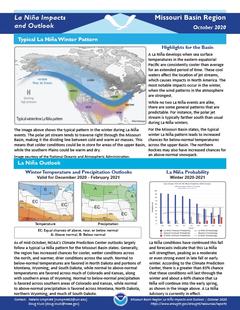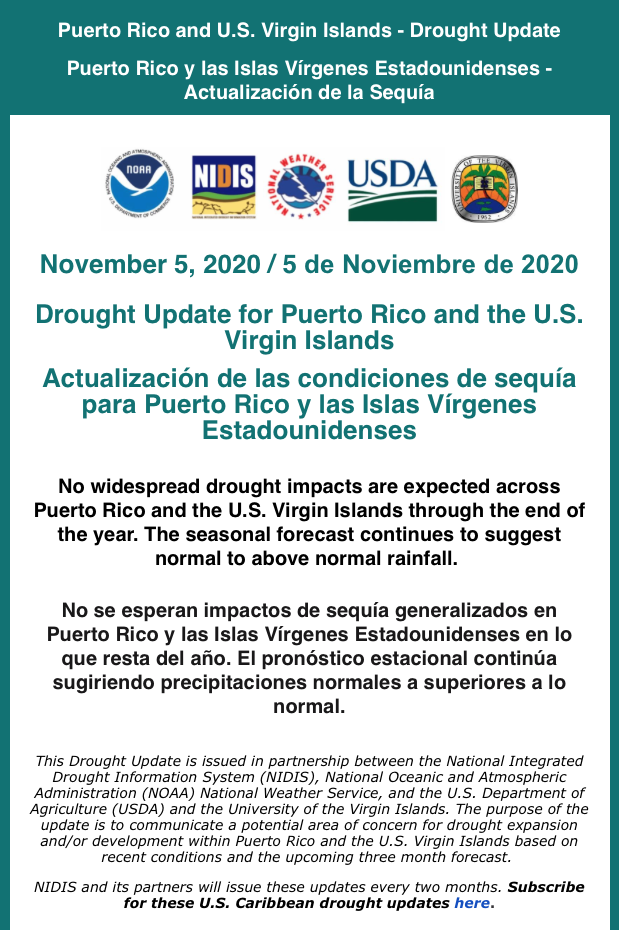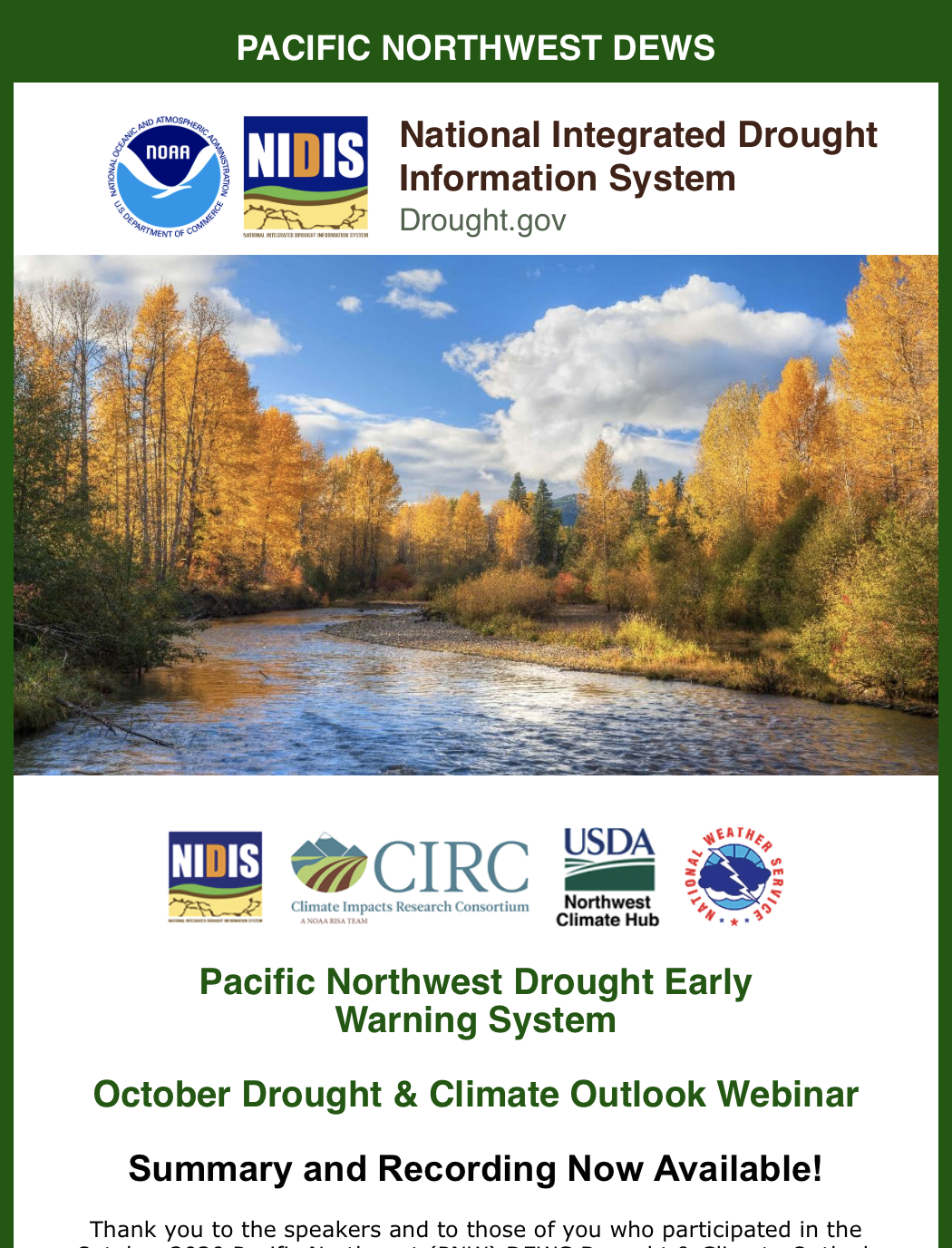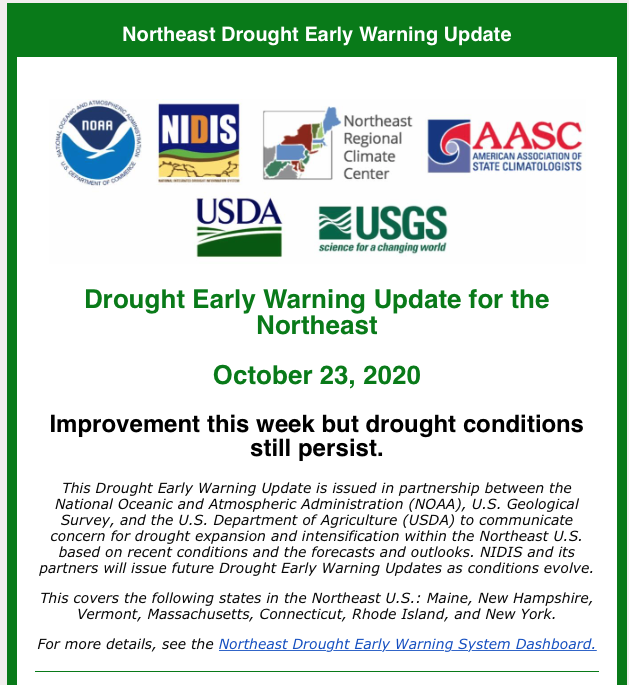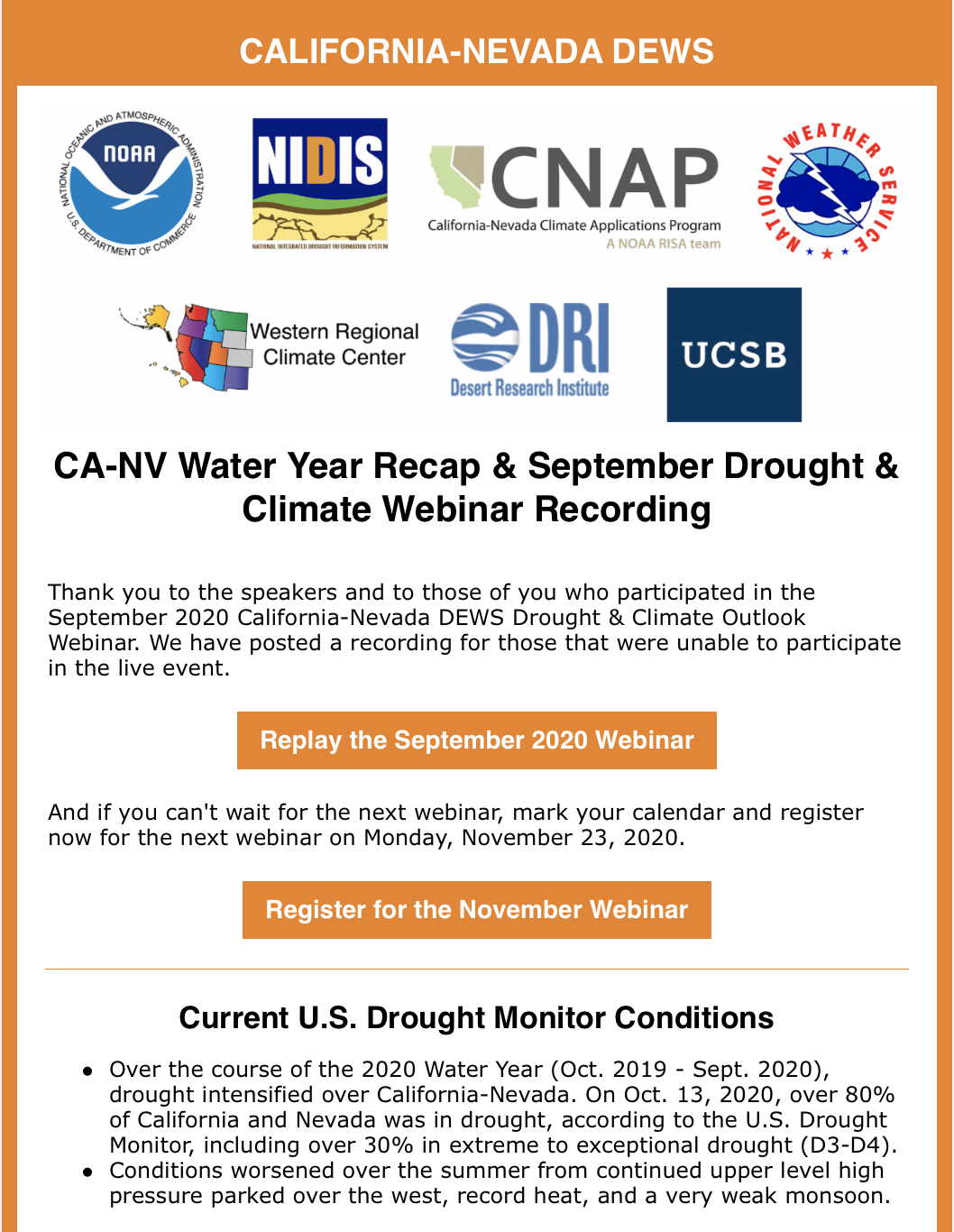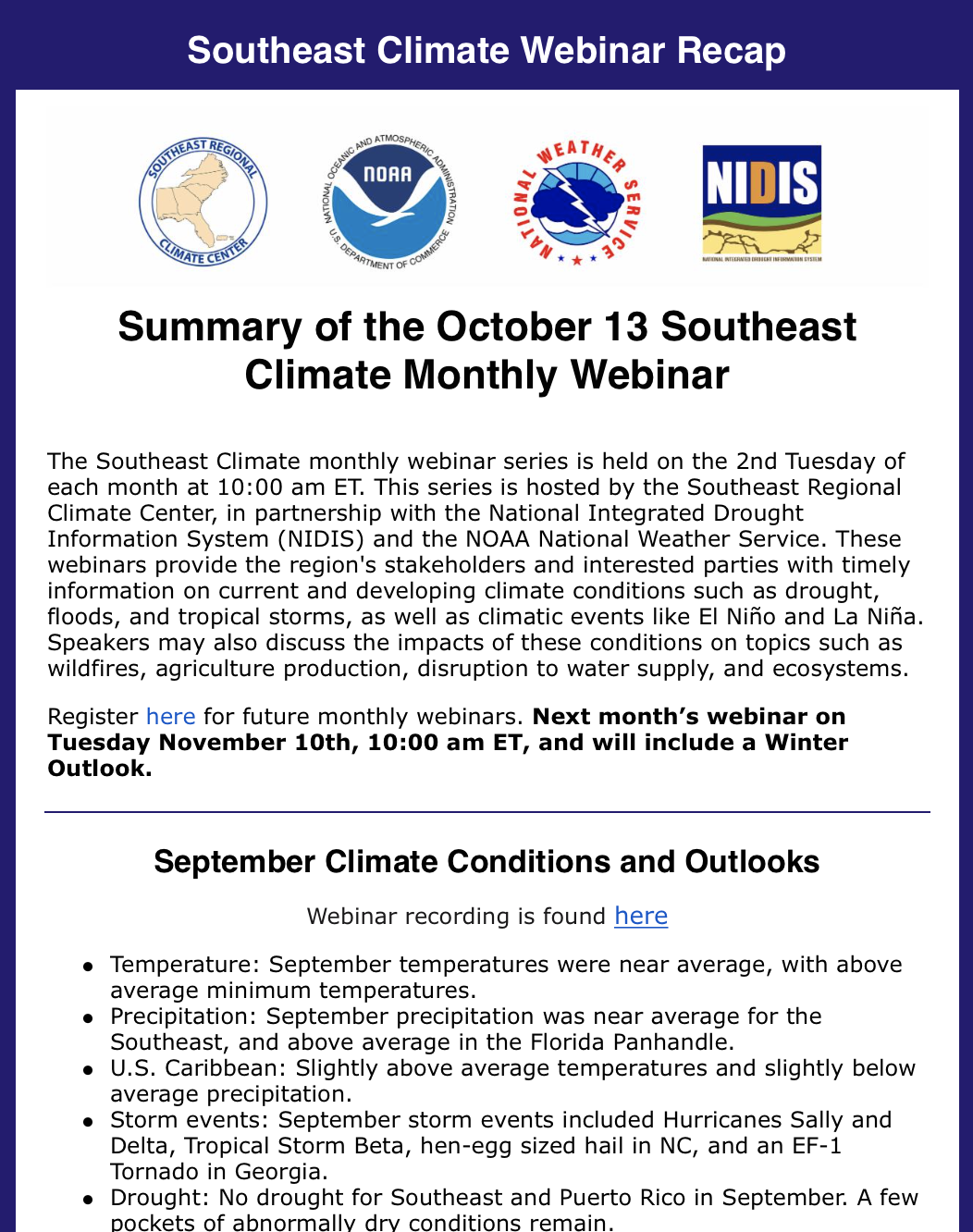Provides information on the typical La Niña winter pattern; the La Niña outlook; potential winter and spring impacts; and comparisons of conditions during previous La Niña years.
NOAA’s Regional Climate Services Program created these outlooks to inform the public about climate impacts within their respective regions. Each regional report contains easy-to-understand language, and anyone can access them through the Drought Portal.
No widespread drought impacts are expected across Puerto Rico and the U.S. Virgin Islands through the end of the year. The seasonal forecast continues to suggest normal to above normal rainfall.
This drought and climate outlook was originally sent via email to the Pacific Northwest DEWS email list.
Climate Recap and Current ConditionsNicholas Bond, Office of the Washington State Climatologist
This drought early warning update was originally sent via email to the Northeast DEWS email list.
This water year recap and drought & climate webinar summary was originally sent via email to the California-Nevada DEWS email list.
Provides a definition of La Nina; a look back at previous La Nina winters; other factors; and the outlook for winter temperatures and precipitation.
NOAA’s Regional Climate Services Program created these Outlooks to inform the public about climate impacts within their respective regions. Each regional report contains easy-to-understand language, and anyone can access them through the Drought Portal.
This climate conditions and outlook update was originally sent via email to the Southeast DEWS email list.
Quarterly Climate Impacts and Outlook for Alaska and Northwestern Canada for June – August 2020; outlook for October – December 2020. Dated October 2020.
Summer was cloudy and wetter than normal over eastern Alaska, Yukon, Northwest Territories and Northern BC. Temperatures were generally colder than normal or close to normal in Yukon, Northwest Territories and Northern BC.
Quarterly Climate Impacts and Outlook for the Great Lakes Region for June – August 2020. Dated September 2020.
Summer was overall very warm across the basin. Several areas of the basin, stretching from Minnesota to Michigan and New York, had one of their top 10 warmest summers for minimum air temperature. In eastern and southern Ontario, temperatures remained above normal almost continuously from mid-June to mid-August. Summer precipitation was near or above average except in the Erie basin, with the overall basin seeing 105% of average.
uarterly Climate Impacts and Outlook for the Midwest Region for June – August 2020. Dated September 2020.
Temperatures were above normal, particularly in the northern half of the Midwest. For the region, the summer ranked as the 18th warmest in 126 years. Summer precipitation across the region varied considerably. Iowa had its 14th driest summer, while Kentucky recorded its 17th wettest summer.


